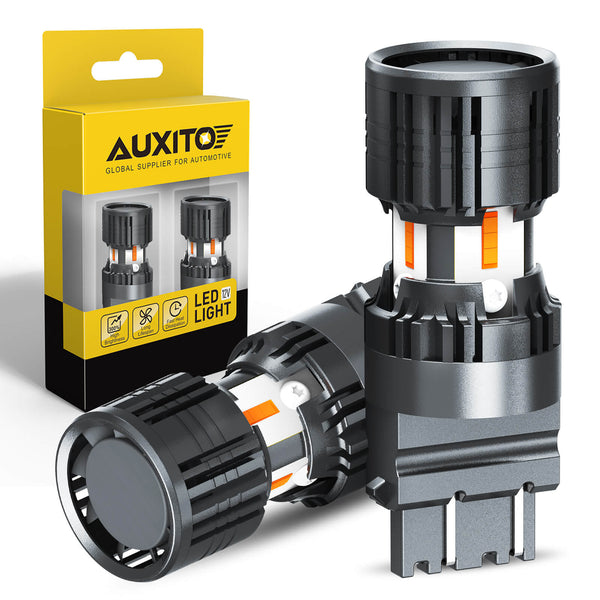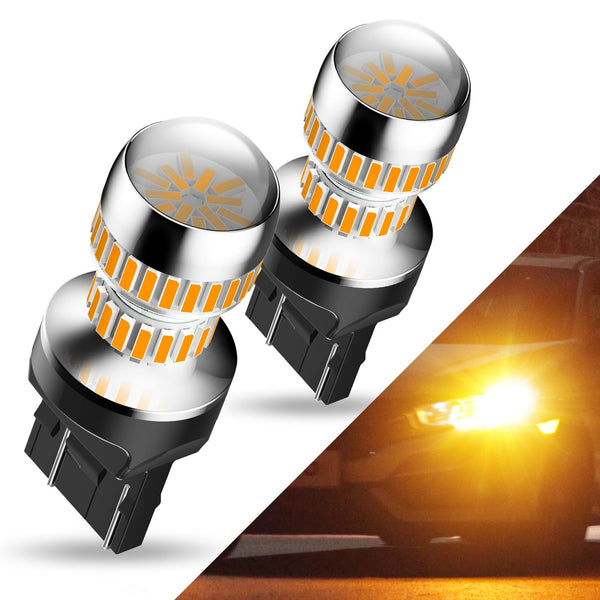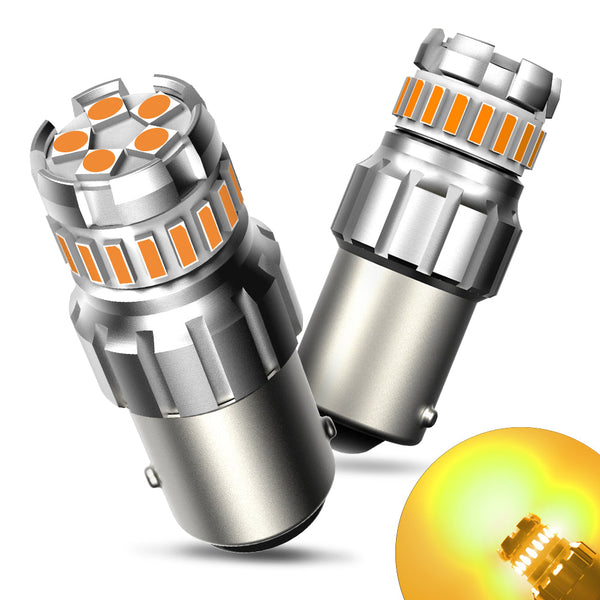











Ever wonder what those blinker lights on your car are for? They're called turn signals or blinkers, and they're a car's way of talking to other drivers!
When a driver wants to turn or change lanes, they flip a switch and - blink-blink! -- the car's front and back lights start flashing on one side. It's like saying, 'Heads up, everyone! I'm about to make a move!'

If these blinkers are malfunctioning, driving would be very confusing and dangerous. Because other people wouldn't know when you were planning to turn or change lanes, causing cars to crash into each other.
That's where this handy guide comes in! It's packed with all the awesome info about car blinkers you'll ever need! We're talking about the most common problems with turn signals and provide you with expert advice!
Are you new to the car world? Don't worry - we've got you covered. This section details everything you need to know about blinkers, from their location to their importance. We'll also answer the most confusing questions about turn signals and taillights, so you'll understand blinkers in no time!
Turn signals are important safety warning devices for vehicles and are usually located on both sides of the front of the vehicle, both sides of the rear of the vehicle and on the outside of the mirrors. Their main function is to clearly communicate the vehicle's intention to turn or change lanes to other road users by flashing. When both sides flash at the same time, it indicates that the vehicle is in an emergency situation or temporary stop.
In the U.S., front turn signals are usually amber, while rear ones can be either amber or red, depending on the vehicle.

In most modern vehicles, tail lights and turn signals are separate and designed to provide clearer signals. However, on some older vehicles or trailers, a combination brake/tail light and turn signal bulb may be used
*For further details, check your vehicle owner's manual.

When you have your hands full and start to turn but forget to turn on your turn signals, you usually get greeted with uncivilized hand gestures from other car owners.
This is par for the course, as it creates a road safety hazard and inconveniences other drivers. But when you carefully follow the rules of the road and turn on your turn signals ahead of time only to be treated with unfriendly road manners nonetheless, it's highly likely that there's something wrong with your turn signals. Next, we will have a complete discussion about turn signal failures and solutions.

Observation outside the vehicle: check for abnormal flashing appearance (e.g., no light, or fast flashing) when the blinker is turned on.
Dashboard Warning: The turn signals are significantly more frequent, accompanied by a faster clicking sound, while some vehicles will indicate a bulb problem with a malfunction light.
 |
 |
Hyperflash is a phenomenon in which the blinker flashes significantly faster. This phenomenon usually occurs after replacing the LED bulb, because of the LED bulb's lower power consumption, the vehicle's electrical system mistakenly believes that the bulb is damaged, thus speeding up the blinking frequency. If you are uncertain whether the vehicle has a CANbus system, consult the owner's manual.

In some cases, however, this may be an intentional feature designed by the LED manufacturer (details of which are typically outlined on the product page). So, is this a benefit or a drawback? And if it’ s an unwanted issue, how can it be resolved?
⭕Supporters: It is believed that high-frequency flashing is more likely to attract attention from the rear.
❌Opponents: frequent flashing may be regarded as a malfunction and affect the driving experience.
| Program Type | Principle | Applicable Scenario |
|---|---|---|
| A. LED bulb with built-in resistor | Matching the original circuit by integrated resistor | Ideal for Modern Vehicles and Users Seeking Plug-and-Play Solutions |
| B. External load resistor | Parallel resistor for power equalization | Ideal for budget-conscious users adept with DIY tasks |
| C. LED-Specific Relay | Directly replace the original flashers | Older models (e.g. pre-2000 vehicles) |
*Refer to the blog for more details ' TURN SIGNAL BLINKING FAST | HOW TO FIX & WHY’
When you realized that the turn signal bulb on one of the sides had been damaged, perhaps you only replaced the side that had the problem in order to save money.
However, multiple automotive experts recommend replacing turn signal bulbs in pairs for several reasons, including:
When considering replacing your blinker to LED bulbs, you’ve probably come across YouTube videos where people test nearly identical-looking LED bulbs and compare reputable brands. While that’s a solid approach, I’d like to offer some straightforward advice on choosing the right LED turn signal (blinker) bulbs—covering everything from brightness and design to long-term durability.
Brightness requirement: If you are located in a rainy/foggy or mountainous area, a turn signal with higher visibility (1000LM+) is the best choice. While typically, 500LM+ turn signal replacement is recommended.
Heat dissipation structure: Prefer aluminum alloy shell + heat dissipation hole design (effectively enhance the heat dissipation efficiency)
LED chip: Prefer Cree, Osram and Philip LED chip types.
*Note that the more LED chips arranged may produce more lighting, but may lead to heat dissipation problems or oversize assembly problems.
Reliability: IP67 and above, high and low temperature resistance to cope with severe weather, while mechanical vibration-resistant bulbs can be applied to more severe terrain.
Compatibility: The bulb with a built-in resistor is suitable for most models with CANbus control system.
| AUXITO Series | 4KP8/4KP10 | 54H | 2F23 |
|---|---|---|---|
 |
 |
 |
|
| Price | $45.99-$49.99 | $26.65 | $22.88-$24.99 |
| Core Advantages |
High brightness, Optimal CANbus system compatibility, High-speed turbo fan design |
Low power and less heat |
Rugged material, good shock resistance |
| Applicable Scenarios | Sensitive models, Off-road | Perfect for everyday driving | Off-road |
| View | Details | Details | Details |
*More Detail "A BUYER'S GUIDE FOR CHOOSING THE BEST LED TURN SIGNAL BULBS"
Check Compatibility: Before replacing bulbs, double-check that they’re specifically designed for your vehicle’s make/model and its CAN-Bus system.
*Pro tip: User model manual OR bulb base size
Installation Matters: When replacing or installing the turn signal bulb, make sure it aligns the base properly caused by the bulb coming into contact with other parts of the vehicle. Wear gloves to avoid skin oils shortening bulb lifespan
Periodic inspection(Every 6 months or before road trips): Check the working condition of the turn signal bulb periodically to ensure that the bulb brightness and flashing frequency are normal and the bulb housing is intact.
Waterproofing and Damp Proofing: After car washes/storms, check housing seals – debris clogs drain holes. Avoid pressure-washing directly at light assemblies. For extreme conditions, upgrade to IP68-rated bulbs.
Properly functioning blinkers are super important for letting folks know where you're headed and ensuring everyone's safety.
From understanding the basics of turn signal bulbs to dealing with stuff like hyperflash, this guide gives you the knowledge you need to keep your vehicle's signaling system in top shape. Remember, compatibility, brightness, and reliability are all key if you choose to upgrade to the LED bulb option. When in doubt, always consult your vehicle's manual or hit up a pro to avoid mistakes.
For road safety, stay visible and keep your signals clear at all times!
Leave a comment